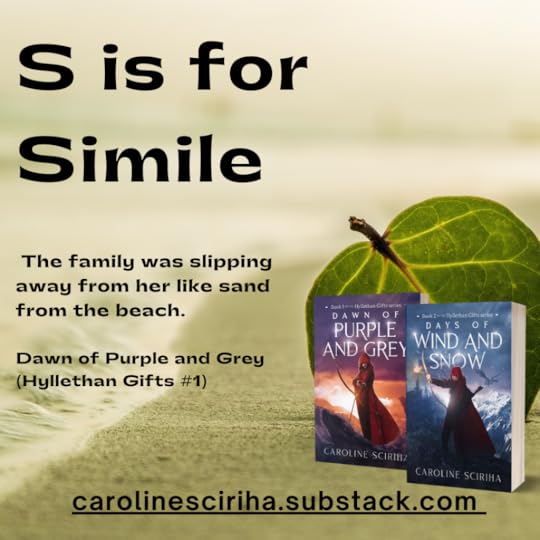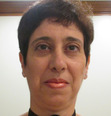S is for Simile, too

Simile is probably the first literary device we’re taught at school. Similes are figures of speech in which two different objects or ideas are compared by using the words like or as.
As a writer, when creating similes I have to keep in mind the experiences of the characters and the world they live in. If the story is set in a medieval setting, creating a comparison with electronic devices, for example, would be laughable. Similarly, if the persona has a particular set of experiences, such as if for example she’s lived all her life on a farm, it makes more sense that her similes would involve comparisons involving the natural world, animals and seasons. In the Hyllethan series, the protagonist lives close to the sea, therefore this is reflected in her similes. For example, when reflecting about the loss of another member of her family, Shael thinks, “The family was slipping away from her like sand from the beach.”
It’s also important that the comparison makes sense, in that the reader can perceive the similarity between the two aspects. A vague similarity would dilute the enjoyment of the story.
Here are a few other similes taken from Dawn of Purple and Grey and Days of Wind and Snow.
“Ma had cuddled and shushed her when she had sobbed that she wanted hair like Jana’s, straight like water falling over a cliff, the colour of ripe blackberries on a sunny day.”
“The dragon on which Yawra had flown from Dragonia was standing at the edge of the beach licking one of its claws, its night-black scales and wings gleaming like rippling water under moonlight.”
“The walk along the colonnaded corridor which spiralled her tower like a marble vine stem, seemed never-ending.”
To read on, please go to http://carolinesciriha.substack.com



